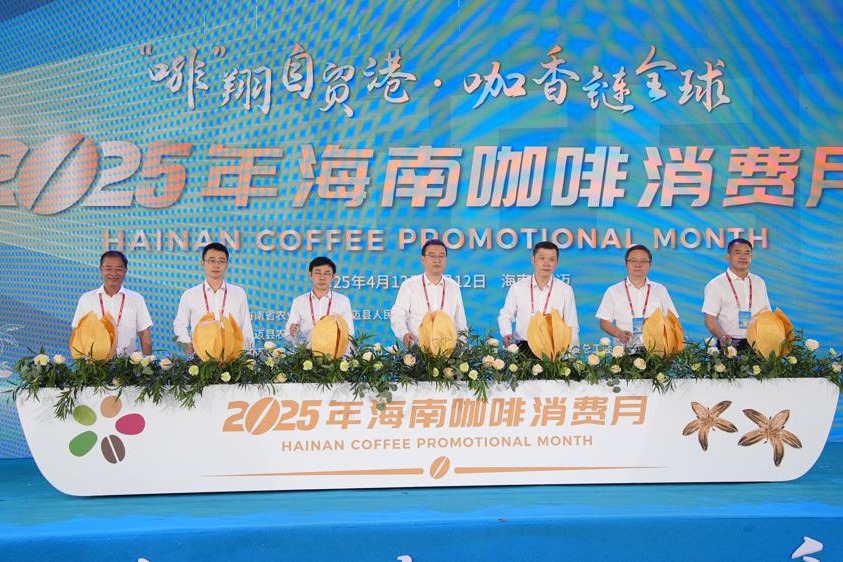Giant domestic mkt hedge against tariffs
Government to help guide exporters to find more business opportunities


As the complexity, severity and uncertainty of the external environment continue to intensify, China's foreign trade has been seeing certain pressure, and the government will help guide the nation's exporters to find more business opportunities in the super large-scale domestic market, a senior official said.
Sheng Qiuping, vice-minister of commerce, made the remarks during the ongoing fifth China International Consumer Products Expo in Haikou, Hainan province, which will conclude on Friday.
China has been the largest country in terms of merchandise trade for eight consecutive years. Last year, the country's foreign trade business value topped 4.3 trillion yuan ($588.2 billion) for the first time, up 5 percent year-on-year, said the General Administration of Customs.
Amid tariff increases by the United States and growing economic fragmentation worldwide, the global industrial chain has been impacted, and increasing duties place significant pressure on China's foreign trade sector.
"We will guide local governments, business associations and e-commerce platforms to help China's foreign trade companies expand their domestic market by utilizing the advantage of the country's super-large scale market and resist the impact of foreign trade pressures," Sheng said.
He added that the government would mainly help 10 provinces with high volume foreign trade business and consumption by expanding domestic sales channels. For instance, the government will help cultivate an integrated services platform for domestic and foreign trade, and guide enterprises to achieve more orders and stabilize operations.
China's major e-commerce platform JD said that beginning May 1, the company will invest 200 billion yuan to purchase foreign trade products for domestic sales, and establish a special section for sales of high-quality foreign trade products, relying on its self-operated model and supply chains.
For offline business, foreign trade enterprises will be guided to showcase and sell their products at pedestrian streets and commercial complexes in major cities, and the Ministry of Commerce will hold more types of promotional events in the next step.
Such an effort will help build a dual-circulation development pattern, the ministry said, meaning internal economic circulation will act as the mainstay of economic growth, while domestic and external markets will complement each other.
China wields great power when it comes to tackling trade pressure, as it has a huge domestic market with 1.4 billion potential consumers.
With the ongoing consumption upgrade trend, the country has a lot of opportunities to expand the domestic market if there are supplies of high-quality, new type products that meet the needs of domestic consumers, said Peng Jianzhen, president of the China Chain Store and Franchise Association.
"Chinese retailers such as Yonghui Superstores said they welcome foreign trade companies to discuss potential cooperative deals with them. In addition, business associations that are responsible for exports and domestic sales have united together to help foreign trade companies overcome difficulties," Peng said.
As early as April last year, Hainan released a group of optimization measures to help accelerate the integration of domestic and foreign trade, and the province's government work report this year stated that it will promote the integrated development of domestic and foreign trade.
In developed countries, after average annual per capita GDP exceeds $10,000, residents will accelerate their transition from material consumption to mid-to-high-end and personalized consumption, and China is undergoing such a transformation, said a report by CITIC Think Tank.
About 260 million Generation Z consumers — those born between 1995 and 2009 — stand as the core force driving growth of such a trend, and their purchasing power is on the rise, the report said.
"We expect a clear upward trend for goods consumption such as fragrances, jewelry, beauty supplies, luxury products and IP products. For services consumption, leisure, entertainment and wellness consumption is on the rise," said Jiang Ya, chief consumer industry analyst from CITIC Securities.




































